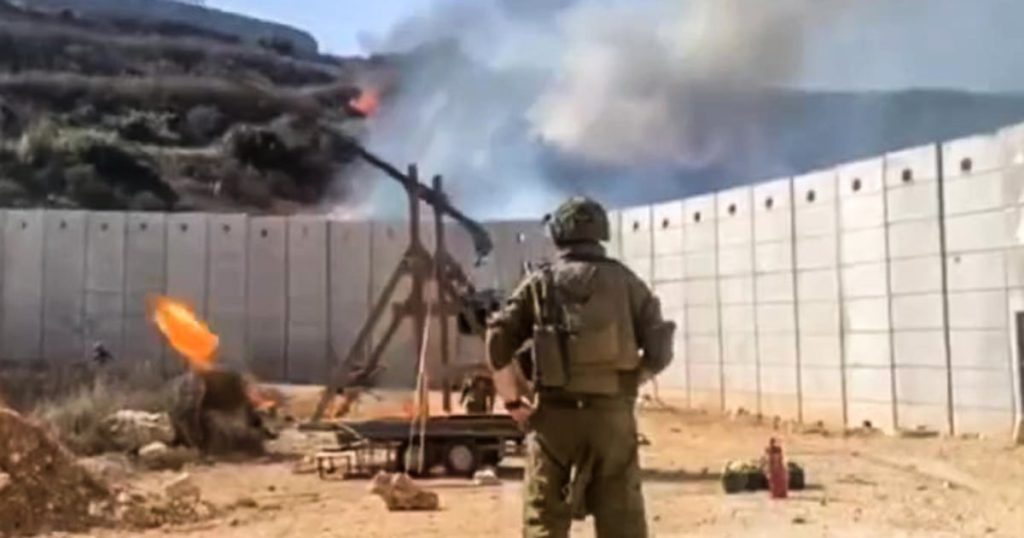Israeli troops stationed on the Lebanese border recently fired a trebuchet, a medieval siege weapon, amid fighting against Hezbollah militants. The six-second video of the trebuchet launching a fireball sparked confusion and amusement in Israel as troops and Hezbollah were engaged in intense fighting. The weapon, largely out of use since the 15th century, was built by reservist soldiers stationed on the border to burn away thick shrubbery where Hezbollah fighters hide. While the trebuchet was not part of the IDF’s standard arsenal and not authorized by military leadership, it served a legitimate military purpose.
Hezbollah has launched over 200 rockets into Israel in response to an Israeli strike that killed one of its senior commanders. This recent barrage of rockets is one of the largest from the Iranian-backed militant group since previous cross-border fighting earlier in October. In contrast to the low-tech trebuchet used by Israeli troops, advanced technologies like Israeli fighter jets and Hezbollah’s explosive drones are also in play in the conflict. The trebuchet, made of wood, lacks precision targeting abilities but served its purpose in burning shrubbery along the border.
The trebuchet’s first recorded use dates back to the 4th century B.C., with its design involving a heavy weight dropping to launch a projectile using a sling attached to a long arm. It was historically used to besiege medieval castles but became obsolete with the development of gunpowder artillery. The trebuchet’s reappearance in modern conflict zones adds a unique and somewhat antiquated element to the ongoing conflict between Israeli forces and Hezbollah militants along the Lebanese border. The use of such a weapon, albeit unconventional and outdated, reflects the evolving nature of warfare and the need for creative solutions in military strategy.
The trebuchet served as a makeshift means to clear shrubbery along the border where Hezbollah fighters often hide, demonstrating the resourcefulness and adaptability of Israeli troops in addressing tactical challenges. Despite its historical context and lack of sophistication compared to modern weaponry, the trebuchet’s deployment showcases the diverse array of tactics and tools utilized in contemporary warfare. As both sides employ advanced technologies and traditional methods in combat, the trebuchet’s brief appearance highlights the complex and multifaceted nature of military engagements in the 21st century.
The use of the trebuchet by Israeli troops in the midst of heightened conflict with Hezbollah underscores the unpredictable and dynamic nature of warfare in the modern era. While advanced weaponry and technology play a significant role in contemporary military operations, the incorporation of historical weapons like the trebuchet adds a unique and unexpected element to the battlefield. The brief use of the trebuchet serves as a reminder of the enduring legacy of ancient warfare techniques and their potential relevance in present-day conflicts, where innovative solutions may be necessary to address evolving threats and challenges.
In conclusion, the trebuchet’s appearance on the Lebanese border during the recent conflict between Israeli forces and Hezbollah militants offers a glimpse into the diverse strategies and tactics employed in modern warfare. While traditional siege weapons like the trebuchet may seem obsolete compared to advanced military technologies, their brief resurgence highlights the adaptability and creativity of military forces in addressing strategic challenges. As conflicts continue to evolve, the use of unconventional weapons like the trebuchet serves as a reminder of the enduring principles of warfare and the need for innovative solutions in the face of complex and dynamic threats.


